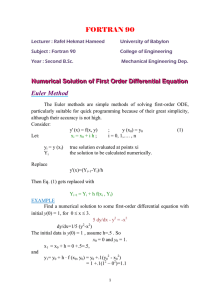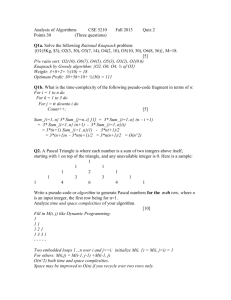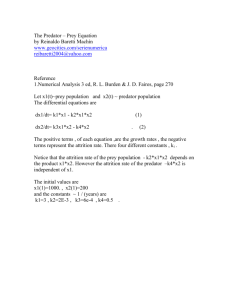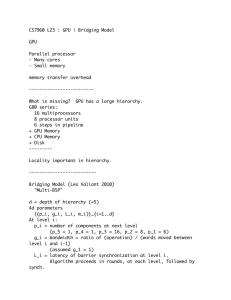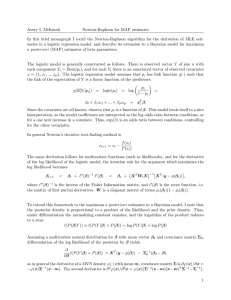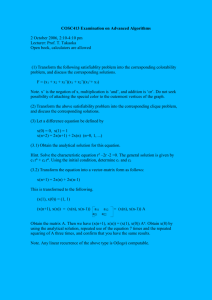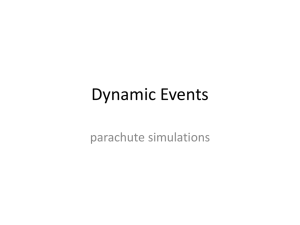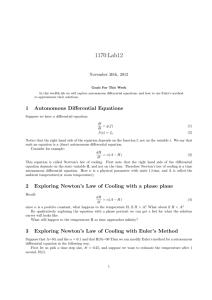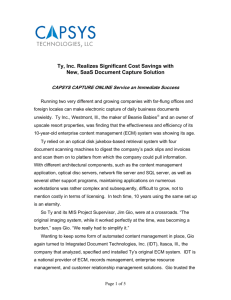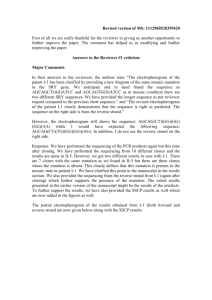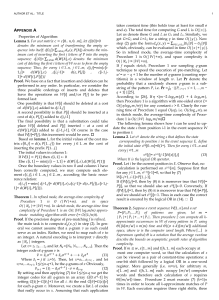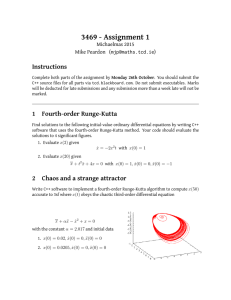FORTRAN 90
advertisement
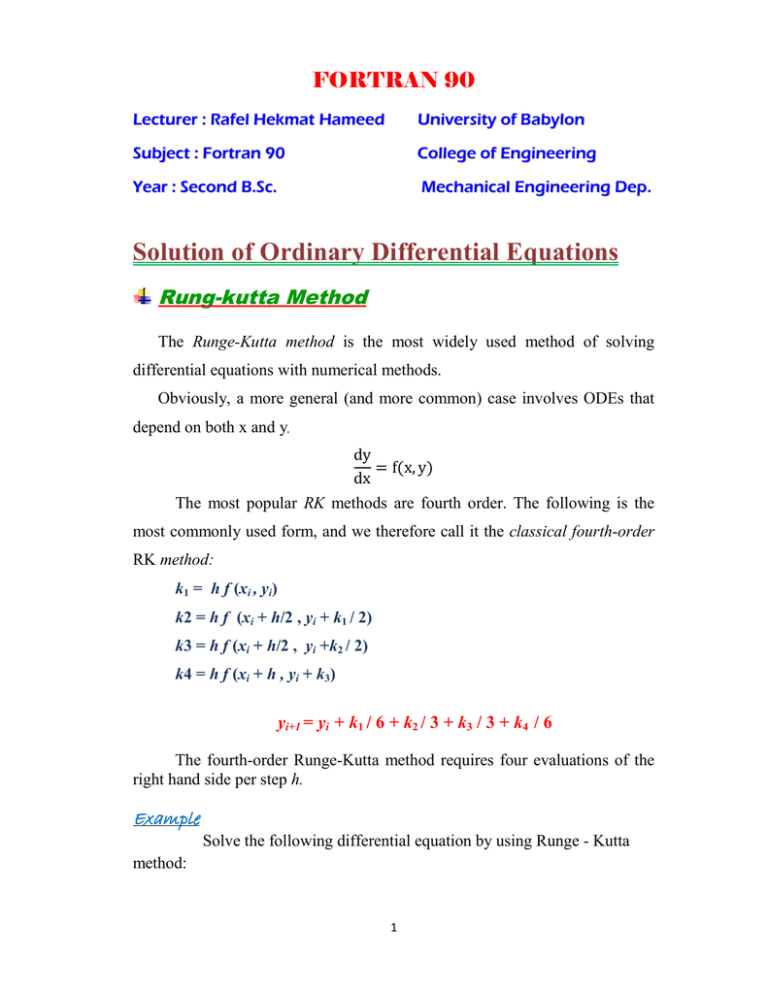
FORTRAN 90 Lecturer : Rafel Hekmat Hameed University of Babylon Subject : Fortran 90 College of Engineering Year : Second B.Sc. Mechanical Engineering Dep. Solution of Ordinary Differential Equations Rung-kutta Method The Runge-Kutta method is the most widely used method of solving differential equations with numerical methods. Obviously, a more general (and more common) case involves ODEs that depend on both x and y, ൌ ሺǡ ሻ The most popular RK methods are fourth order. The following is the most commonly used form, and we therefore call it the classical fourth-order RK method: k1 = h f (xi , yi) k2 = h f (xi + h/2 , yi + k1 / 2) k3 = h f (xi + h/2 , yi +k2 / 2) k4 = h f (xi + h , yi + k3) yi+1 = yi + k1 / 6 + k2 / 3 + k3 / 3 + k4 / 6 The fourth-order Runge-Kutta method requires four evaluations of the right hand side per step h. Example Solve the following differential equation by using Runge - Kutta method: ϭ ݀ݕ ൌݔݕ ݀ݔ With initial y(0)=1, 0 ≤ x ≤ 0.1, assume h=0.1 K1=0.1[0+1]=0.10000 K2=0.1[.05+1.05]=0.11000 K3=0.1[.05+1.055]=0.11050 K4=0.1[0.1+1.11050]=0.12105 y(0.1) = 0.1 + 1/6 [0.1 + 2(0.11) + 2(0.11050) + 0.1210] = 1.11034 a fortran 90 program to solve ordinary differential equation by runge-kutta method program runge_kutta implicit none real,dimension(10)::x,y integer::i real::f,k1,k2,k3,k4,h,xo,yo read(*,*) xo,yo,h x(1)=xo y(1)=yo write(*,7)"x(1)=",xo,"y(1)=",yo 7format(2x,a,f9.6,2x,a,f9.6) i=2 do k1=h*f(x(i-1),y(i-1)) k2=h*f(x(i-1)+h/2,y(i-1)+k1/2) k3=h*f(x(i-1)+h/2,y(i-1)+k2/2) k4=h*f(x(i-1)+h,y(i-1)+k3) y(i)=y(i-1)+1/6.0*(k1+2*k2+2*k3+k4) x(i)=x(1)+h*(i-1) Ϯ if(x(i).gt.0.1) exit write(*,17)"x(",i,")=",x(i),"y(",i,")=",y(i 17format (2x,a,i2,a,2x,f9.6,2x,a,i2,a,2x,f9.6 i=i+1 enddo end real function f(x,y) implicit none real::x,y f=x+y end ϯ
